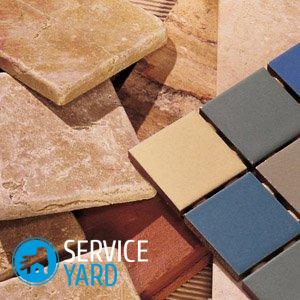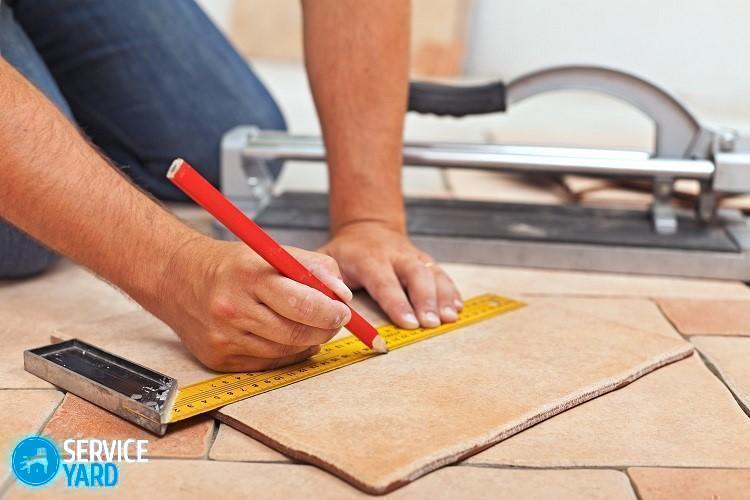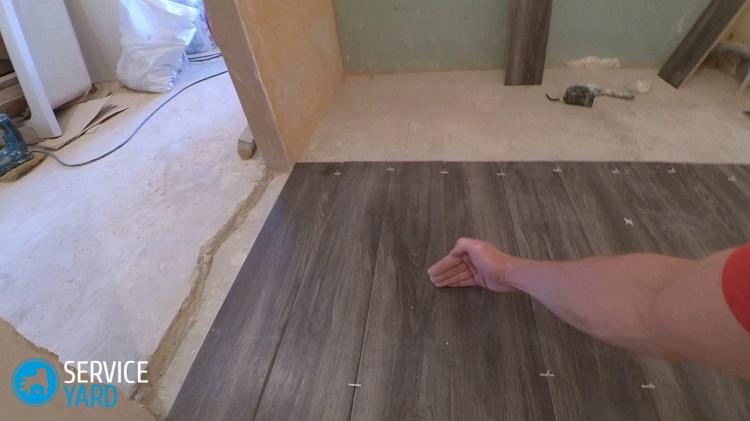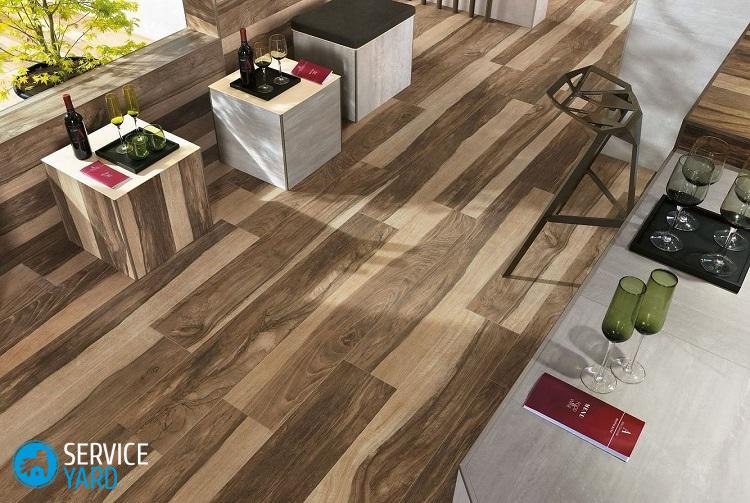How to stick a tile to a tree?

Repair is a serious test for any family, especially for the mental and financial condition of relatives. There is nothing wrong when redecorating with wallpapering or painting the walls, even self-updating furniture and floors is possible. But when the question arises of laying the tiles, it is better to turn to the masters, although in this situation you should not blindly and completely trust someone. Therefore, if the base of your floors or walls is wooden, it is important to know how to stick the tiles to the tree, how to do it correctly. We will analyze the features of such a technology in this article.
to contents ↑Training
It is necessary to prepare for any action, respectively - the installation of ceramic tiles is no exception. However, it is worth remembering that its physical properties are very different from the performance of wooden parts. The most important difference is that any wooden surface is breathable and, depending on the season and air humidity, is subject to significant deformations, which can not be said about the tile. It implies strength, rigidity and special resistance to moisture.
Thus, it is important to solve the breathing problems of wooden structures and the moisture resistance of the tiles, and the question of how to stick the tiles to the wood is fundamental.
We will determine the plane in which the surface to be repaired lies: whether it is a floor or a wall, if it is a wall, then the procedure is simpler, but if it is horizontal, then we still need to find out what state the wooden component is in.
to contents ↑Floor laying
It is important to consider that ceramic tiles will significantly increase the load on the floor base, as well as block possible access to the logs. Therefore, before gluing the tile to the tree, we find out what state the tree is in now. There can be two options, and the general procedure depends on this:
- The floor condition is as good as possible, it does not creak, does not bend, and has no other noticeable defects.
- Repair is required - from minimal to complete replacement or adding lags.
If the floors do not require separate repairs, the procedure is as follows:
- We clean the boards from the old coating (paint, varnish) in any way. Paint can be removed manually using chemical solvents or a hair dryer.
- We cover the tree with an antiseptic, preferably 2-3 layers.
- After the impregnation has dried, we place a glassine or vapor barrier membrane.
Important! The rough part should be turned inside the room.
- To create the perfect surface for the installation of tiles, we use plywood or chipboard, preferably as dense as possible. We lay the sheets in a checkerboard pattern, leaving a small gap near the walls, which we then fill with foam.
Important! Despite the fact that both plywood and particleboard are derived from wood, they are less prone to deformation, it is easier to mount a tile to them than to glue ceramic tiles to the wood.
- For installation we use a special polyurethane or epoxy adhesive, which even after hardening retains a certain flexibility and plasticity, however, it is quite expensive.
- If the height of the room allows, we create an additional screed, covering the chipboard with latex or drying oil. While the impregnation hardens, we lay the reinforcing mesh with a small approach to the walls. After solidification, we additionally fix with self-tapping screws. Another leveling method involves the use of gypsum sheets.
Important! Be sure to leave a compensating gap between the floor and the wall. And glue in this situation can be used as usual for tiles.
If the floor was originally a problem, then it is necessary to reconstruct the floor in accordance with all the rules, and then use the procedure described above.
to contents ↑We build walls
If working with the floor is relatively clear, then how to glue the ceramic tiles to the wood on the wall? In this situation, it is also necessary to carry out preliminary work:
- Attach a waterproofing layer (roofing material) to the walls. It can be glued, or you can use a construction stapler.
- With an indent from the wall of 1-1.5 mm on top of the roofing material, mount the plaster grid.
- Carefully smooth the entire surface with cement mortar, making notches on the dried coating for better fastening.
- After complete drying, mount the tile.
Important! Many masters refuse this method in favor of the easier one - covering the wall with drywall or gypsum fiber, which also gives a good result.
Further tile laying is done according to the usual requirements for working with tiles, although it is better to use large sheets of ceramics.
to contents ↑Important! Sometimes in critical situations there is no time and the ability to level the surface, then you can use “liquid nails”, which are created specifically for working with wood. However, this option is not very reliable and is applicable only in emergency situations.
Stock footage
Thus, you can find a way how to stick ceramic tiles on a wooden surface, how to “make friends” between such different materials. The main thing in the process will be whether vapor and waterproofing are made correctly and in compliance with all operating conditions, as well as how smooth the mounting surface is.
- How to choose a vacuum cleaner taking into account the characteristics of the house and coatings?
- What to look for when choosing a water delivery
- How to quickly create comfort at home - tips for housewives
- How to choose the perfect TV - useful tips
- What to look for when choosing blinds
- What should be running shoes?
- What useful things can you buy in a hardware store
- Iphone 11 pro max review
- Than iPhone is better than Android smartphones







